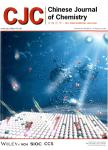Highly Efficient Hybrid White Tandem Organic Light-Emitting Diodes with MoO3 Layer
Highly Efficient Hybrid White Tandem Organic Light-Emitting Diodes with MoO3 Layer作者机构:Key Laboratory of Organic Optoelectronics and Molecular Engineering of Ministry of Education Department of Chemistry Tsinghua University Beijing 100084 China Kyoto Sangyo University Kamigamo Kita-ku Kyoto 603-8555 Japan Institute of Advanced Materials Nanjing Tech University Nanjing Jiangsu 210009 China
出 版 物:《Chinese Journal of Chemistry》 (中国化学(英文版))
年 卷 期:2015年第33卷第8期
页 面:859-864页
核心收录:
学科分类:08[工学] 0805[工学-材料科学与工程(可授工学、理学学位)] 080502[工学-材料学] 0703[理学-化学]
基 金:supported by the National Key Basic Research and Development Programme of China support by the Grant-in-Aid for the Scientific Research
主 题:organic light emitting diode white emission tandem device
摘 要:Electroluminescence (EL) characteristics have been studied for a hybrid tandem white organic light emitting diode (OLED) with a blue emitting fluorescent EL1 unit based on BCzVBi and a yellow emitting phosphorescent EL2 unit based on (fbi)2Ir(acac), where a MoO3 layer is inserted between EL1 and EL2 units as charge generation layer (CGL). Maximum current and power efficiencies of 68.1 cd/A and 29.2 lm/W were obtained, respectively, while the current and power efficiencies at luminance of 1000 cd/m2 were 68.0 cd/A and 24.6 lm/W. The yellow emission appears from about 4.5 V firstly, while the blue emission starts to appear from about 5.4 V. It was found that charge generation from CGL of MoO3/NPB bilayer occurred at high voltages of above 5.4 V but not at low voltages below 5.2 V.



